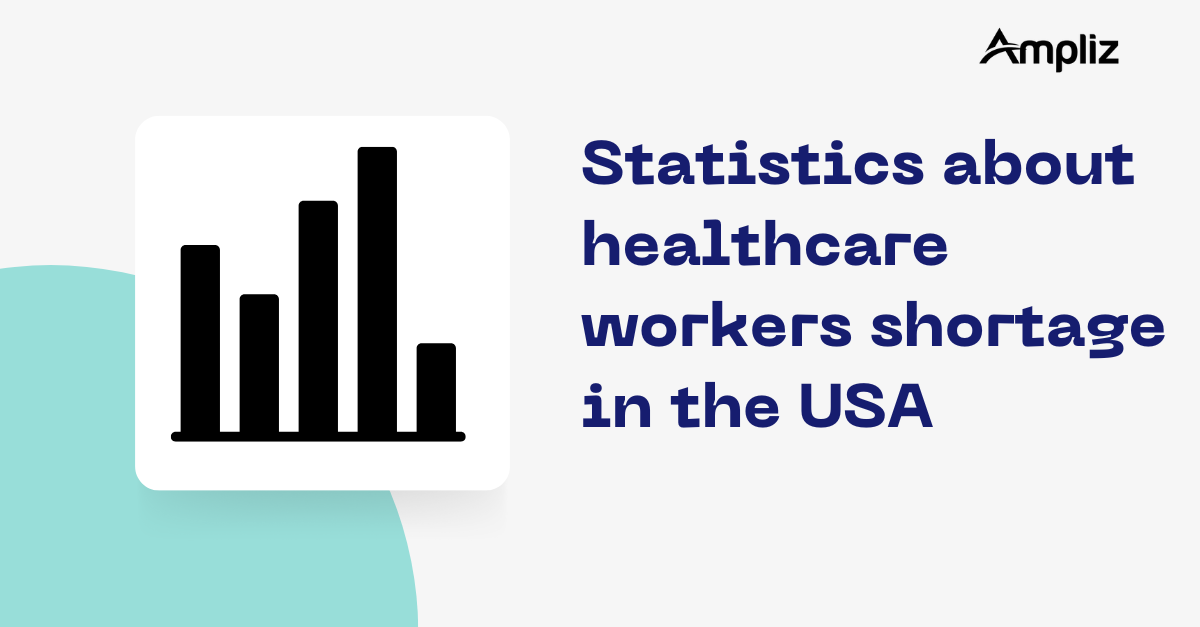Have you ever thought that the healthcare worker shortage in the US at your organization is impacting not only your organization but the entire nation?
Yes, health is wealth, not only for any individual but for the entire economy of the country and world.
A healthier population leads to a strong local economy. When people of the country are healthy they show up to work regularly, and are more productive at work, they are in better physical and mental health and are interested in engaging in training and skilling.
According to Moody’s analytics report, the top performing countries in the BCBS health index had incomes about 4000$ higher, and GDPs almost 10000$ higher than the national average.
Research has shown that proven interventions, actions, or programs such as adopting healthy behavior, expanding access to primary care, and improving adherence to medications can reduce the disease burden, and help people to stay healthier.
Moreover, healthy citizens are expected to contribute 12$ trillion to the global economy by the year 2040.
But this seems nearly impossible amidst the healthcare workers shortage.
Let’s delve into the prediction about the healthcare worker shortage United States with some proven data.
Healthcare staffing shortage statistics

- As per Mackignsy’s May 11 report, the United States could see a shortage of 200,000 to 450,000 registered nurses by 2025.
- According to a Mercer report within the next five years, there would be a shortage of more than a 3.2million lower-wage healthcare workers like medical assistants, home health aid, and nursing assistants.
- According to the Association of American Medical Colleges, the US is going to face a shortage of 37,800 to 1,24000 physicians by 2034.
- According to the 15th march pharmacist survey by the American society of health system, 1 in 10 organizations reported that they lost 41% of pharmacist technicians.
- According to the clinician report of the future, 41% of clinicians are on the verge of quitting.
- Healthcare worker shortage can climb up to 1.1million by the end of 2022.
Why is there a shortage of medical professionals?
The United States is experiencing a shortage of healthcare workers. The problem has become especially acute recently due to the aging population, including the so-called Baby Boomer generation. People in this demographic often require more medical care, often from physician specialists.
There is an increasingly dire shortage of healthcare workers, as the aging population requires more medical care from physician specialists. The problem has become especially acute recently due to the Baby Boomer generation. People in this demographic often require more medical care, often from physician specialists.
Let’s explore some of the reasons responsible for such a high shortage of healthcare workers.
1. Lack of self-satisfaction with the work
Overloading of the work interrupts the required time healthcare workers should give each patient. This inability to serve patients with full attention is taking a toll on them. and this is one of the reasons for leaving the profession.
2. Physical and mental burnout
According to the National Academies of Science, Engineering, and Medical, between 35-54% of nurses and physicians were burned out before the pandemic happened. During the pandemic, the situation got even worse, and they finally resigned from their job.
3. Dissatisfaction with the employer
Many healthcare workers told the Atlantic that hospitals cut salaries, benefits, and raises. Apart from this, they forced them to work longer hours, denied paid offs, reduced working hours, and failed to provide Personal protective equipment. This kind of behavior of hospitals forced healthcare professionals to leave their job.
Consequences of Shortage of Healthcare workers in the USA
Prolonged patients’ stay, increased bill amount, lower recovery rate, unavailability of doctors when needed, and reduced access to quality care are some of the threatening consequences of a healthcare worker shortage.
According to the National Hospital flash report, hospitals have experienced a 15.6% increase in labor expenses per bed discharge compared to September 2019.
Another report by the National hospital claimed that the number of full-time equivalent staff per adjusted occupied bed has gone down by 3%. This resulted in a prolonged stay of patients at hospitals.
According to premierinc.com staffing shortages have caused hospitals 24$billion throughout the pandemic, with an additional 3$billion in acquiring personal protective equipment for staff.
healthcare workforce shortage solutions

Let’s dive into some of the quite obvious yet effective solutions to combat the challenge of a shortage of healthcare workers in the US and offer satisfactory healthcare services with profitable margins.
1. Invest in the available workforce
One of the ways to reduce employee turnover is to make them feel valued. Invest your time, money, and effort, in your current employees. Advent Health, a Florida-based healthcare system invested 440$ million in additional compensation for the healthcare worker.
It doesn’t have to be money always, you can invest in other unnecessary things as well like training, or necessary tools and solutions which make their task easy. For example, Intermountain Healthcare partnered with the educational platform in stride to offer better training services and workflow tools to caregivers and their family members.
Hospitals should consider fulfilling the requirements of their employees like a subsidy for childcare, flexible schedule, and mid-day mental health breaks.
Training tools are of great help to combat administrative budgeting and planning burden that interrupts medical staff productivity.
2. Focus on education
One of the best and most effective ways to cope with the healthcare worker shortage is by helping aspiring healthcare professionals. According to the American Association of Nursing, tens of thousands of nurses are turned away due to a shortage of clinical sites, faculty, or resources.
Healthcare organizations should partner with colleges and universities to provide them with the necessary training and offer them direct placements in their organizations.
South Carolina-based prisma health has recently partnered with local universities to accelerate training programs, make education available and help medical students with tuition.
3. Offer flexibility
Since the pandemic, every industry has accepted hybrid work culture and flexible work timings which have resulted in increased productivity of employees and work-life balance. Healthcare organizations should also adopt this change and offer more flexibility to healthcare workers which increases their morale and accommodates workers across the country.
4. Going virtual
Virtual platforms are a great way to combat limited staff and educate future healthcare workers. The simulation labs, virtual reality, and video games offer the flexibility to the students to learn at their own pace.
The virtual place is not just limited to training and education but extended to the workplace also. With the help of virtual strategies, CDC encourages hospitals to embrace telehealth for non-essential procedures and visits to reduce the strain on hospital staff and frontline workers.
Virtual communications help healthcare workers and staff stay connected and prevent confusion regarding timeslots, staff availability, and workplace responsibilities. Virtual information systems are of great help to prevent unnecessary time spent searching for medications, hunting down equipment, and filling out redundant paperwork.
5. Intelligently automate your revenue cycle
According to research by Frost and Sullivan, 99% of healthcare has adopted digital transformation. Incorporating different intelligent automation technologies results in significant staffing and financial advantages.
Implementing intelligent automation in revenue cycle management can help in boosting operational efficiency, better support systems interoperability while reducing friction, and dramatically improve overall financial performance.
Intelligent automation has helped in unlocking human potential, reducing the requirement of staff, and less human error.
6. Expedite processing for verified and qualified international healthcare professionals
Thousands of qualified nurses from well-established nursing programs are waiting for their visa approval and provide critical care in America.
Once their visa gets approved it would be a great relief for the shortage of nurses and they can be placed in the department in dire need. Still, for some nurses, facing a visa chargeback could mean an added financial strain as they work to settle into their new roles.
7. Focus on professional purpose
With the help of communication learning and campaigns restore the sense of commitment and passion to draw healthcare professionals to the profession. Ensure the provision of a good understanding of the value of each staff including non-clinical staff.
Conclusion
An optimum number of healthcare professionals in the hospital is a must to provide satisfactory treatment to patients at an affordable rate. That’s why a healthcare organization should take all the measures to maintain the correct quantity of quality healthcare professionals.
For this, either they have to take all the measures to prevent employee turnover or they have to put efforts into hiring new professionals.
Seeing the present scenario, the gap between the demand and supply of healthcare workers is expected to deepen, making it challenging for healthcare organizations to recruit quality professionals.
Ampliz can help you to overcome these challenges of shortage of healthcare workers in the US by providing you with a 99% accurate database of healthcare professionals looking to get placed. This database is backed with a name, email, phone number, skills, and Linkedin profile that helps you to level up your recruiting process.




